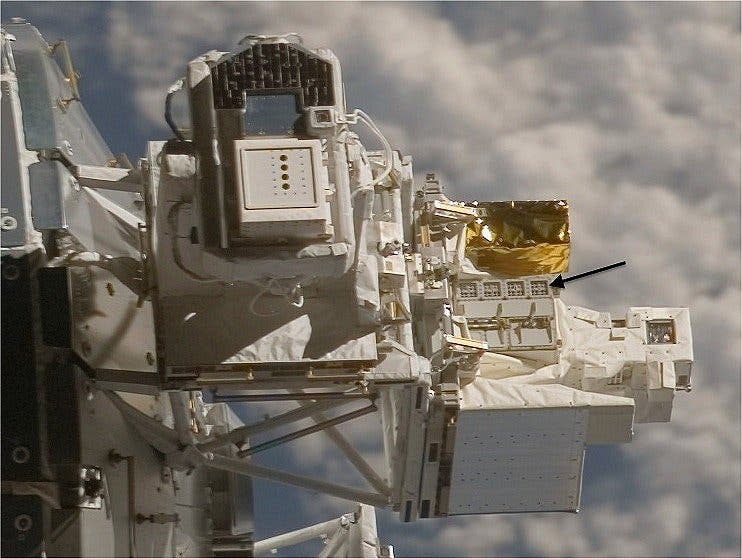
Image Credit:
DLR, Institute of Aerospace Medicine/Dr. Gerda Horneck
Whenever alien invasions are concerned, most people tend to image extraterrestrial spaceships landing on Earth, not the other way around. In reality, this alien invasion most likely will happen or already has happen in reverse, as Earth-based life forms could reach distant asteroids or planets, like Mars, hitching rides on human spaceship. To assess this possibility, NASA researchers published three studies that looked at the survival capability of microorganisms, particularly adapted to extreme conditions like those found in deep space travel.
Surviving in space
Contamination with Earth-based organisms is a huge concern for NASA and other space programs investigating life harboring conditions on other worlds. The Curiosity rover, the most advanced mobile laboratory to have landed on Mars yet, is charged with the task of confirming whtether or not the planet is or ever was capable of sustaining life. Imagine the dismay everyone would feel to find life on Mars, but only later to realize that it came from Earth hitching a ride with the rover in the first place. These concerns are very much real and special measures are in place to ensure that any spacecraft that goes into space leaves sterilized. Some life forms are more persistent than others, however, and while chances are low, the risk of contamination is still there.
[READ] Tardigrades – the microscopic water bears that defy all odds
Currently, spacecraft landing on Mars or other planets where life might exist must meet requirements for a maximum allowable level of microbial life, or bioburden. These acceptable levels were based on studies of how various life forms survive exposure to the rigors associated with space travel.
“If you are able to reduce the numbers to acceptable levels, a proxy for cleanliness, the assumption is that the life forms will not survive under harsh space conditions,” explains Kasthuri J. Venkateswaran, a researcher with the Biotechnology and Planetary Protection Group at NASA’s Jet Propulsion Laboratory and a co-author on all three papers.
This assumption may not hold true, according to these three most recent studies published by NASA scientists, which took place in space, outside the International Space Station. One such study, for instance, showed that spores of Bacillus pumilus SAFR-032 were able to withstand extremely harsh conditions. When researchers exposed this hardy organism to a simulated Mars environment that kills standard spores in 30 seconds, it survived 30 minutes. For one of the recent experiments, Bacillus pumilus SAFR-032 spores were exposed for 18 months on the European Technology Exposure Facility (EuTEF), a test facility mounted outside the space station.
“After testing exposure to the simulated Mars environment, we wanted to see what would happen in real space, and EuTEF gave us the chance,” says Venkateswaran. “To our surprise, some of the spores survived for 18 months.” These surviving spores had higher concentrations of proteins associated with UV radiation resistance and, in fact, showed elevated UV resistance when revived and re-exposed on Earth.
Cover of darkness may help spread contamination
In another investigation, spores of Bacillus pumilus SAFR-032 and another spore-forming bacteria, Bacillus subtilis 168, were dried on pieces of spacecraft-quality aluminum and subjected for 1.5 years to the vacuum of space, cosmic and extraterrestrial solar radiation and temperature fluctuations on EuTEF. These samples were also subjected to the same extreme Martin simulated atmospheres. Most spores didn’t survive when exposed to solar UV radiation in space, as well as the Martin light spectrum, but when samples were kept in the dark about 50% survived. This suggests that spores could survive a trip to Mars if these are tucked away in a dark hatch or layered underneath other spores.
![Electron micrographs of Bacillus pumilus SAFR-032 spores on aluminum before and after exposure to space conditions. [Reproduced with permission from P. Vaishampayan et al., Survival of Bacillus pumilus Spores for a Prolonged Period of Time in Real Space Conditions. Astrobiology Vol 12, No 5, 2012.] Image Credit: P. Vaishampayan, et al./Astrobiology](https://cdn.zmescience.com/wp-content/uploads/2014/05/lithospermia.jpg)
Image Credit:
P. Vaishampayan, et al./Astrobiology
NASA researchers selected organisms able to cope with some of the most extreme environments on Earth. Much to their surprise, the scientists discovered these organisms were able to survive in even more hostile environment of space. Lithopanspermia would require thousands or even millions of years, much longer than the experiment’s duration, but results provide the first evidence of the hardiness of these organisms in space and suggest the possibility that space-traveling rocks could carry life between planets.
All three studies, Survival of Rock-Colonizing Organisms After 1.5 Years in Outer Space, Resistance of Bacterial Endospores to Outer Space for Planetary Protection Purposes and Survival of Bacillus Pumilus Spores for a Prolonged Period of Time in Real Space Conditions, have appeared in Astrobiology Journal.






